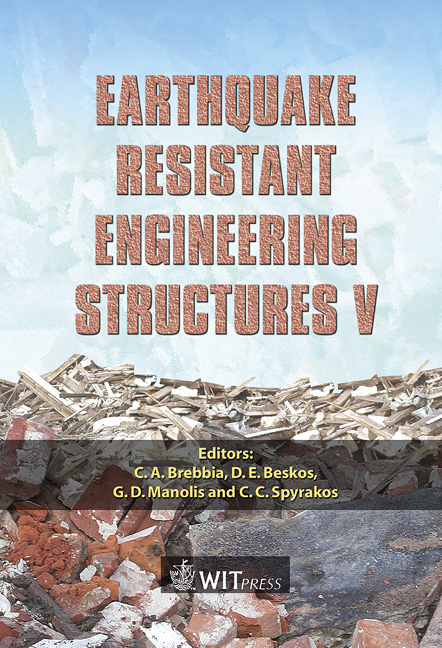Critical Evaluation Of Near-field Seismic Records In Greece
Price
Free (open access)
Transaction
Volume
81
Pages
10
Published
2005
Size
332 kb
Paper DOI
10.2495/ERES050061
Copyright
WIT Press
Author(s)
C. C. Spyrakos, Ch. A. Maniatakis & J. Taflambas
Abstract
The study of seismic records characterized as \“near-field” ground motions is increasingly drawing more attention. It has been recognized that accelerograms obtained in recent years close to the source of strong earthquakes reveal exceptional features that challenge widely held concepts about the nature of strong ground motion. This study presents systematic processing and evaluation of over 860 records of strong ground motions in Greece in order to identify \“near-field” features with the aid of damage potential parameters. The findings serve as a basis to evaluate the adequacy of the current aseismic code to specify seismic demand. In addition \“well known” damage potential parameters are critically evaluated to characterize \“near field” records. Keywords: seismic records, near-field ground motions, aseismic codes. 1 Introduction and source of data Sources for the present investigation are the databases of the Geodynamic Institute (G.I.), of the National Observatory of Athens (N.O.A.) and Institute of Engineering Seismology and Earthquake Engineering (I.T.S.A.K.). The Strong Motion Database (NOA-SMDB) of the G.I. includes all the data concerning the strong motion network of the Institute for the period 1973 – 1999. The database includes 183 corrected and 183 uncorrected records of seismic events. Each record includes acceleration, velocity and displacement for the three components of the corresponding event. The core of the database’s structure comprises three relations called Quake, Record and Station presented with different ways for the investigation convenience. Briefly we mention that; a) each record includes information such as the station name, the site, the component name and code, the
Keywords
seismic records, near-field ground motions, aseismic codes.





